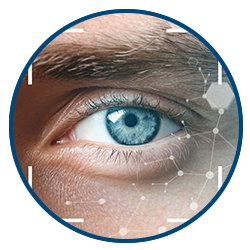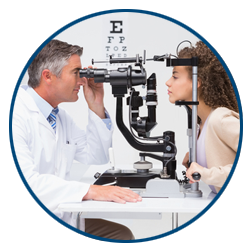
Not all milestones are about walking or talking—some are about seeing. From a baby smiling at your face to a child following words on a page, vision plays a key role in development.
At Eyesymmetry Vision Center, we’ve seen firsthand how early eye and vision care can influence a child’s learning, movement, and behavior. Our Owings Mills location is not only for pediatric eye exams. It is also a place where parents find peace of mind.
How Vision Challenges Affect Infants and Children
Children rely on their vision to interact with the world—tracking moving objects, identifying faces, copying words from a whiteboard, and reading books. When vision isn’t working correctly, it can delay developmental milestones, interfere with learning, and lead to frustration, which is often mistaken for behavioral issues.
For example:
A baby who isn’t following moving objects with their eyes by 3 months might not be reacting to visual cues as expected. In toddlers, tripping over toys or bumping into furniture may not be a sign of clumsiness—it might be a result of poor depth perception. By the time children start school, vision problems can affect their ability to read, write, or focus.
At Eyesymmetry Vision Center, we offer pediatric eye exams that are designed with these unique developmental needs in mind. We utilize tools and techniques specifically designed for nonverbal or pre-reading children to assess eye alignment, focus, tracking, and overall eye health. Our eye doctors combine their deep experience with a child-friendly approach to make the most of your child's eye care.
Warning Signs of Vision Problems in Children and Infants
Even when children aren’t able to verbalize what they’re experiencing, their behavior often tells the story. Here’s what to look for:
In Infants (0–12 months)
- Poor eye contact: If a baby doesn’t look at you when spoken to or avoids looking at faces.
- Constant eye turning: Eyes that drift inward or outward more than occasionally.
- Lack of visual tracking: Not following objects with their eyes by 3–4 months of age.
- Excessive tearing May signal a blocked tear duct or another eye issue.
- Light sensitivity: This might be due to underlying health and eye conditions.
In Toddlers and Preschoolers
- Squinting or covering one eye: A common sign of amblyopia or eye misalignment.
- Frequent rubbing of eyes: Often linked to visual fatigue or undiagnosed vision issues.
- Tilting the head: Suggests a possible eye muscle imbalance.
- Avoiding puzzles or detailed tasks: Could point to problems with visual focus or depth perception.
In School-Age Children
- Complaints of headaches or tired eyes: Especially after reading or using screens.
- Difficulty copying from the board: This may stem from poor focusing or tracking skills.
- Holding books too close: A possible sign of nearsightedness.
- Falling behind in school: Sometimes mistakenly labeled as a learning disability when their visual skills are the root cause.
Get the Right Eye Care for Your Children in Owings Mills
Your child deserves every opportunity to thrive—and that starts with clear, comfortable vision. At Eyesymmetry Vision Center, we know that early detection of vision problems can change the course of a child’s development for the better.
Whether you're noticing small signs or simply want reassurance, our pediatric eye examinations are designed to be thorough, gentle, and reassuring for both parents and children. Book your appointment in Owings Mills to give your child the visual tools they need to grow with confidence.







